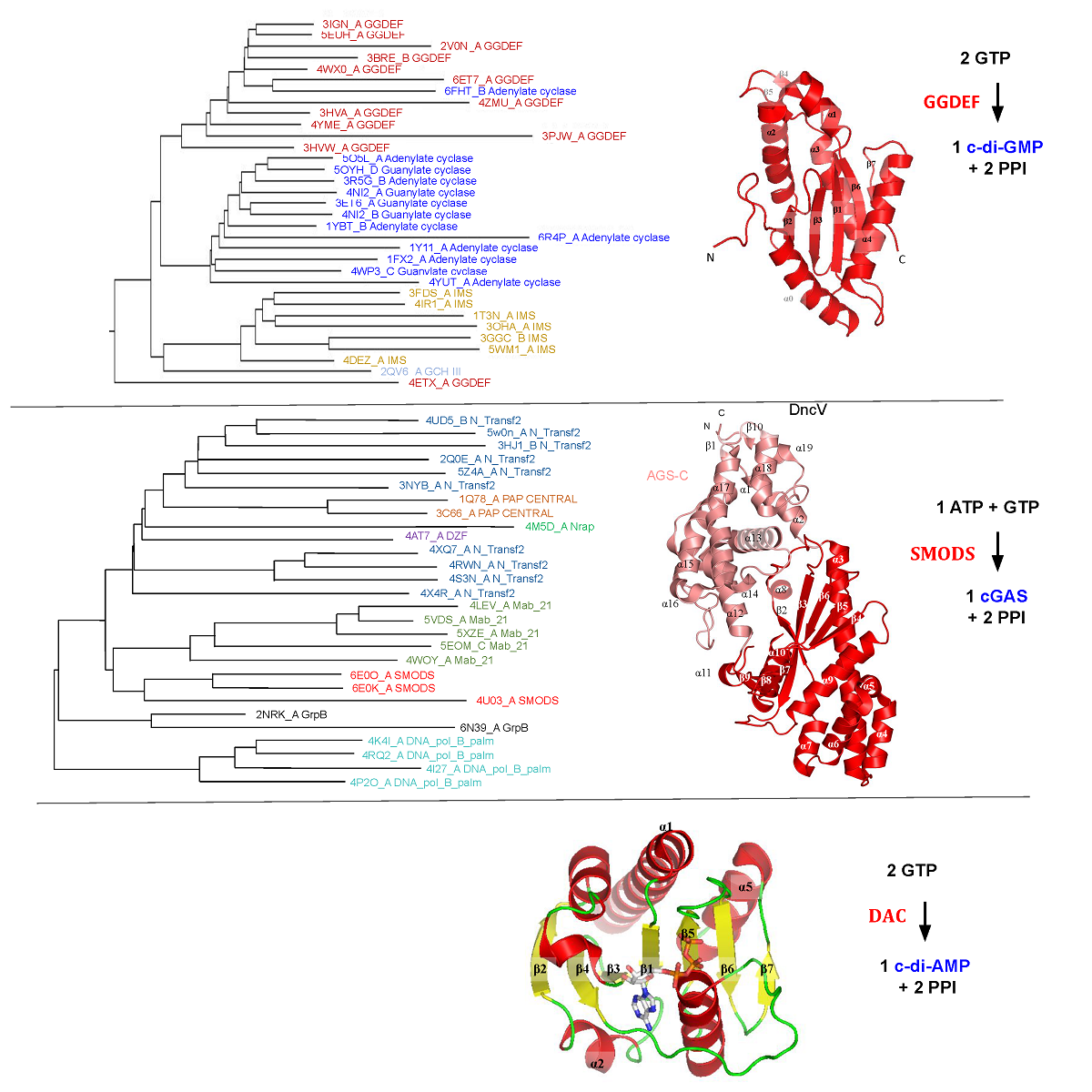The regulation of multiple bacterial phenotypes was found to depend on different cyclic di-nucleotides (CDNs) that constitute intracellular signalling second messenger systems. Most notably, c-di-GMP, along with proteins related to its synthesis, sensing and degradation, was identified as playing a central role in the switching from biofilm to planktonic modes of growth. Recently, this world has been under expansion, with the discoveries of other signalling CNDs in bacteria (c-di-AMP and cGAMP) and also in eukaryotes, novel protein and RNA receptors of CDNs, and the numerous functions related to these molecules. In this work, we comprehensively review and analyse the structural biology data about the systems that bacteria use to synthesise and recognise CDNs, detailing their interactions at molecular level with their products/ligands. Additional interesting observations were made, including that different receptor types can bind CDNs in similar conformations and that, based on genomic data, different CDN second messenger systems may coexist in many organisms. The large amount of sequence and structural data available allows a broad view of the importance of CDNs in bacteria, but how cells coordinate these molecules to ensure adaptation to changing environmental conditions is still open for much further exploration.

